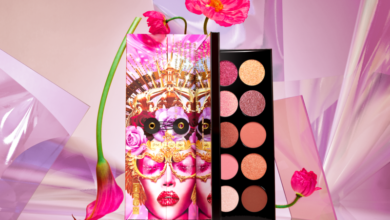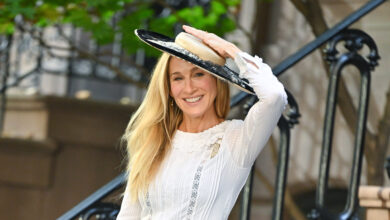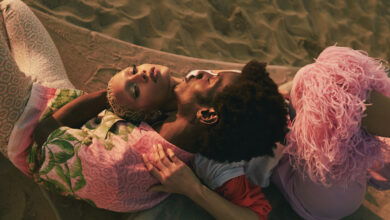The 52-foot Amsterdam Rainbow Dress Arrives in Toronto
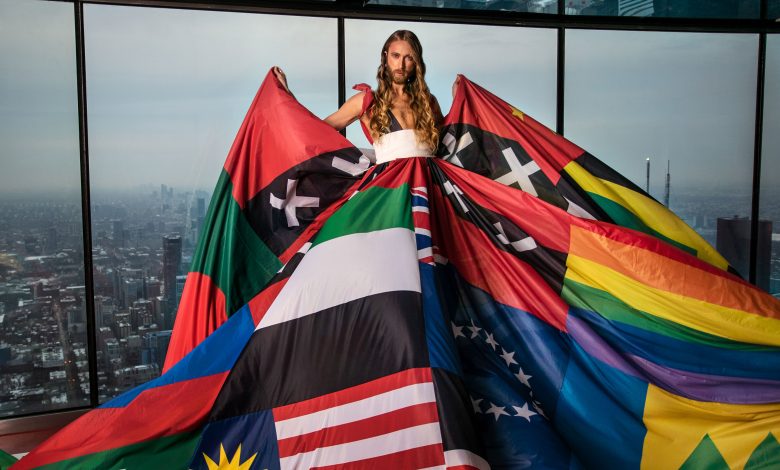
[ad_1]
The symbolic gown has arrived in Canada, and Myles Sexton couldn’t be more proud to wear it.
This is not your average 52-foot-long gown. But really, can any 52-foot-long gown ever be classified as average?
The Amsterdam Rainbow Dress is undoubtedly the coolest and most poignant example of flag-based apparel that the world has ever seen. Created in The Netherlands by Mattijs van Bergen, Arnout van Krimpen, Jochem Kaan and Oeri van WoezikIn, the gown was initially designed for EuroPride 2016 but has since blossomed into so much more than a parade costume.
While wearable patriotism is once again trending in the wake of February’s Winter Olympics, don’t confuse this symbol of activism for a pair of maple leaf mittens. The stunningly extravagant ensemble is a wearable collage of the flags of 71 countries (77 in 2016) where homosexuality is punishable by law, including eight where homosexual acts can result in the death penalty. Once these nations change their rules, their flags are removed and replaced with an LGBTQ2S+ one, hoping that the dress will eventually be completely covered in rainbows. The Amsterdam Rainbow Dress currently features six of these colourful flags, courtesy of Angola, Belize, India, Trinidad and Tobago and Botswana.
With an enviable amount of stamps in its passport, the dress has been on a global tour to continue to raise awareness for inclusion and equal rights for the LGBTQ2S+ community. This December, it made its first trip to Canada and chose Myles Sexton, queer influencer and anti-stigma advocate for HIV awareness, to represent Toronto in a photoshoot of epic proportions. Other stops on the Great White North tour included trans rights activist and refugee (originally from Burundi, a country featured on the dress for its criminilization of homosexuality) Alicia Kazobinka in Montreal and recent winner of Canada’s Drag Race season two Icesis Couture in Ottawa.
Days after their photoshoot at the CN Tower, FASHION spoke with Sexton about their time wearing the Amsterdam Rainbow dress, how they managed to move while wearing 52-feet of fabric, and fashion’s role in advocacy.
How did it feel to be chosen to represent Toronto for the Amsterdam Rainbow Dress project?
I’m honoured that the creators of this dress would even consider me to be a part of it. When they asked me, I don’t think I let them even finish the sentence — I immediately said yes.
Why was it such a no-brainer to say yes?
The dress has such a powerful message behind it. You know, we are so lucky to live in Canada because I have the privilege to leave my house and be authentically who I want to be every single day. For 71 counties, this isn’t possible. Even still, I grew up in a tiny farming town in Nova Scotia where I didn’t see anyone like me. And even though I was protected by law, my life was horrible. At one point, I attempted suicide because I was constantly ridiculed, and I felt there was no hope. So I know firsthand how the people who live in these countries feel; who don’t feel safe or that they belong. That’s why it’s so important for me to fight and advocate for LGBTQ2S+ rights.
LGBT Youthline offers free peer support for youth aged 26 and under (1-800-268-9688).
What was it like wearing the gown for the first time?
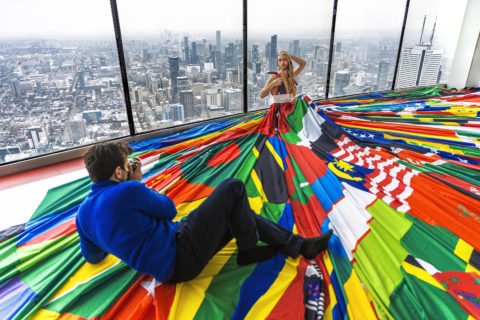
I honestly got really emotional. I remember getting to the top of the CN Tower around 6:30 a.m. and seeing the dress laid out on the floor, and I literally got goosebumps all over my body. It just encompasses a lot of feelings. We all know what 71 looks like as a number, but to see it in a physical form with all the flags hit differently. I just wanted to make the dress proud.
Practically speaking, as the dress is 52 feet long, how did you get into it?
Remember that parachute game that we were all forced to play in school? It was kind of like that [laughs]. People had to grab corners and lift the dress’s skirt for me to get under it. There was a hole around the straps for me to actually get the dress on my body, and then I had to stand on a ladder so the photographer could capture the full skirt.
Were you able to move?

Just my upper body, which was different because I think a lot of modelling comes from the legs, so I’m used to moving around. It was also very interesting to have so many people holding sections of the dress to create motion in the skirt because I couldn’t physically move it myself.
What was the overall look you were going for with your hair, makeup and accessories?
I wanted to do something more minimal and play with gender while also staying true to myself. My aesthetic is very gender-neutral. I have a beard and chest hair, and I didn’t want the look to be super feminine, so it was about finding that sweet spot in the middle. I focused on my hair, and the splash of red through my eyes and cheeks represented my HIV activism as red is the colour of HIV awareness.
What surprised you about the entire experience?
I think the reaction from other people has been the most surprising — like people freak out when I show them the photos. When I explain the story behind the dress and what it represents, it’s been a real trigger for people. Even my partner’s mom was like, “Oh my God, this is the most incredible thing I’ve ever seen you do.”
Looking at the final images, what stands out to you?
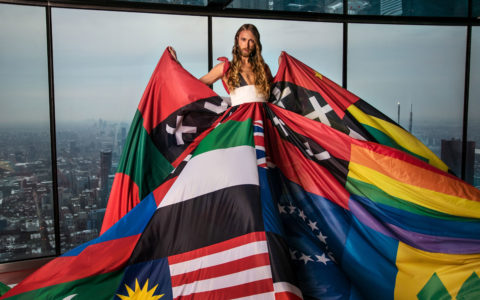
The amount of teamwork that went into making this! It was truly a labour of love. It shows the importance of community because everyone involved from around the world has come from different walks of life and has their own story to tell. I think it’s cool that we’re leaving a little piece of our heart with this dress, and it’s carrying on to the next person and place.
You’ve had a lot of experience being an LGBTQ2S+ advocate. What do you think fashion’s role is in advocacy?
I feel like it’s like the original clickbait [laughs]. It’s something that captures people’s attention and makes them feel things. Fashion is an art and a form of self-expression: all walks of life are involved in fashion. What’s so cool is that we can communicate these bold messages and reach people who might not be taking steps to educate themselves on certain topics through fashion. Fashion has the power to influence and inform people.
[ad_2]
Source link



